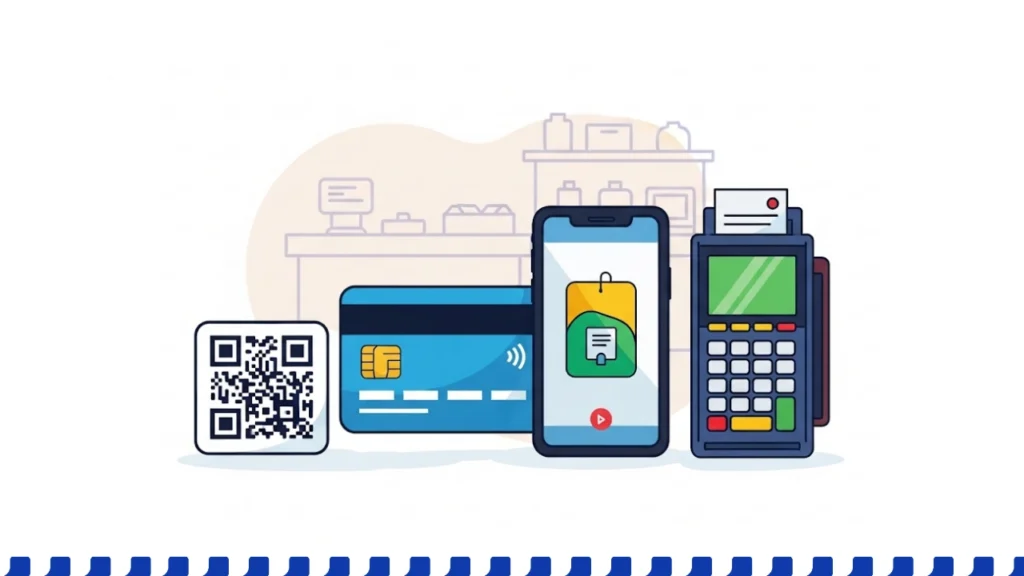Imagine that you have poured your heart and soul into building your dream business. It’s thriving, and you’re feeling successful. As your business grows bigger, you notice that new visitors are not making purchases. You then noticed that this is caused by a lack of convenient payment methods.
Your customers expect a seamless experience while making payment for your product or service. If they can’t pay how they want, they’ll likely abandon their cart and take their business elsewhere. That is why you need to understand the best payment method for your business.
6 Payment Methods for Small Businesses

Cash
Cash is the ancestor of all modern payment methods and its place cannot be taken even with the advancement in technology. Since its invention several centuries ago, it has continued to prove itself as a capable payment method.
While the birth of newer methods of payment, such as credit cards etc., has caused a decline in its use, cash is still king in certain environments. For example, if your SME is in Nigeria, then using cash is the major payment method.
Why Cash?
A substantial number of consumers regard cash as “important or very important.” Most likely because of the anonymity and privacy it provides. There is no need for bank details, identification numbers, and all that hassle.
Cash payments are immediate. The customer doesn’t have to wait for an app to load, nor do they need to wait for the money to “settle” in their account. For small businesses with a physical cash is a must-have. Another perfect point is the zero cost of maintenance. This works well for profit maximization. There is no extra cost per transaction. Although the narrative has changed, as there are now several MMOs in Nigeria that minimize costs.
Cons
As a vendor, large deposits to banks are a red flag for illegal activities. So, you’ll need to make your deposits in smaller amounts (also a red flag!).
ACH Payment Method
ACH payments are digital payments made through the Automated Clearing House network. Government benefits, payrolls, and consumer bills are some examples of ACH payments. In 2022,$72 trillion was moved through the ACH Network.
It provides a secure way of moving money from one bank to another without printing checks or visiting the bank.
The ACH allows money to be “pulled” (with consumer authority) by automation. It makes it suitable for businesses with recurring billings. All the customer has to do is input their bank details and transaction details.
TheACH payment method has low transaction fees compared to counterparts like wire transfers, etc. Making it suitable for small businesses
Cons
ACH typically takes 1-3 days for a successful payment. Even at that, no transaction is ever declared successful. This is not good enough for small businesses that will need to confirm transactions immediately. Also, it is restricted only to the U.S.
Contactless Payments
Rather than entering a PIN or swiping, this method allows customers to simply tap their cards for payment. It’s a novelty. While this is a nice development for POS transactions, it’s also worrisome. There are skimming devices and software that record data from the card (the magnetic strip).
Credit Card Payment.
With this method, customers make payments with cards approved and funded by banks. It is fast, easy, and widely used. This is an acceptable payment all over the world.
The downside to card payments is that their transaction fees can discourage most businesses, especially SMEs. However, the amount of popularity its convenience has garnered amongst consumers makes it one of the necessary payment methods for small businesses.
Online Payment Method
These cover payment methods that require an internet connection. Examples of online payment methods are digital wallets and bank transfers.
Why online payments?
In this era, an online presence is No. 1 on the “How to Start a Successful Business” manual. Statistics show that 33% of the world’s population are online shoppers.
Of course, with an online branch, a payment method is necessary. It is a relatively low-cost option with premium security.
Mobile Payments
In basic terms, mobile payments are any kind of digital payment made with a mobile phone. E.g., Digital wallets. Most times, work with online payments, but you can also use USSD codes in making transactions.
48% of all global e-commerce transactions are based on mobile payments, and as a small business owner, you might want to tap into that number. Statistica also notes that 25% of mobile phone users made payments in 2023.
However, just like card payments, transaction fees are on the high side. Although, chances of fraud are low with authentication protocols like fingerprint ID and GPS location. This provides payment security, an added advantage for small businesses.
How To Choose The Best Payment Methods for Small Businesses

You could just pick any payment method for your business. But that wouldn’t be right. As a growing enterprise, you’ll need to consider the following factors to choose the most suitable method for your business. Some of these factors are:
Cost
This is usually the first criterion anyone thinks of. You should, too. As much as the cost of each method is important, there are more important criteria, like security. Eventually, you’ll have to strike a perfect balance between cost and security.
Customer Preference
“The customer is always right.” Maybe not always, but the aim is to achieve customer satisfaction.
You can survey to find out the demographics of your customer base. And know which payment method is most convenient.
Location
This factor is crucial. What works in Europe might not work in Africa. For instance, the ACH payment method is an option only for businesses in the U.S.
In Nigeria, cash is the preferred payment method. You need to study the environment to know which method is best.
Security
Security should be the top priority when choosing payment methods for small businesses. Different payment methods have different levels of security. Assess each one properly and determine how effective it’ll be for your business.
Scalability
Businesses aren’t expected to stay small forever. For that, you’ll need a payment system that can grow with the business with less stress.
How To Accept Payments as a Small Business
There are several ways to accept payments as a small business. All you need to do is study each one for pros and cons. Then pick the one with the perfect pro-and-con balance.
From a more general perspective, a simple way of accepting payment is by using an online payment platform. Rather than partnering with several providers for each payment method, you can implement them through one API, Application Programming Interface. It is a sure way to cut costs.
In conclusion, choosing the right payment methods for small businesses is essential. Customer satisfaction is achieved, and cart abandonment is solved. By offering a variety of payment options, from cash to online methods, consumers can pick the most convenient.
By considering factors like cost, security, and scalability, small businesses can select the best payment methods to provide the best shopping experience for their customers.




